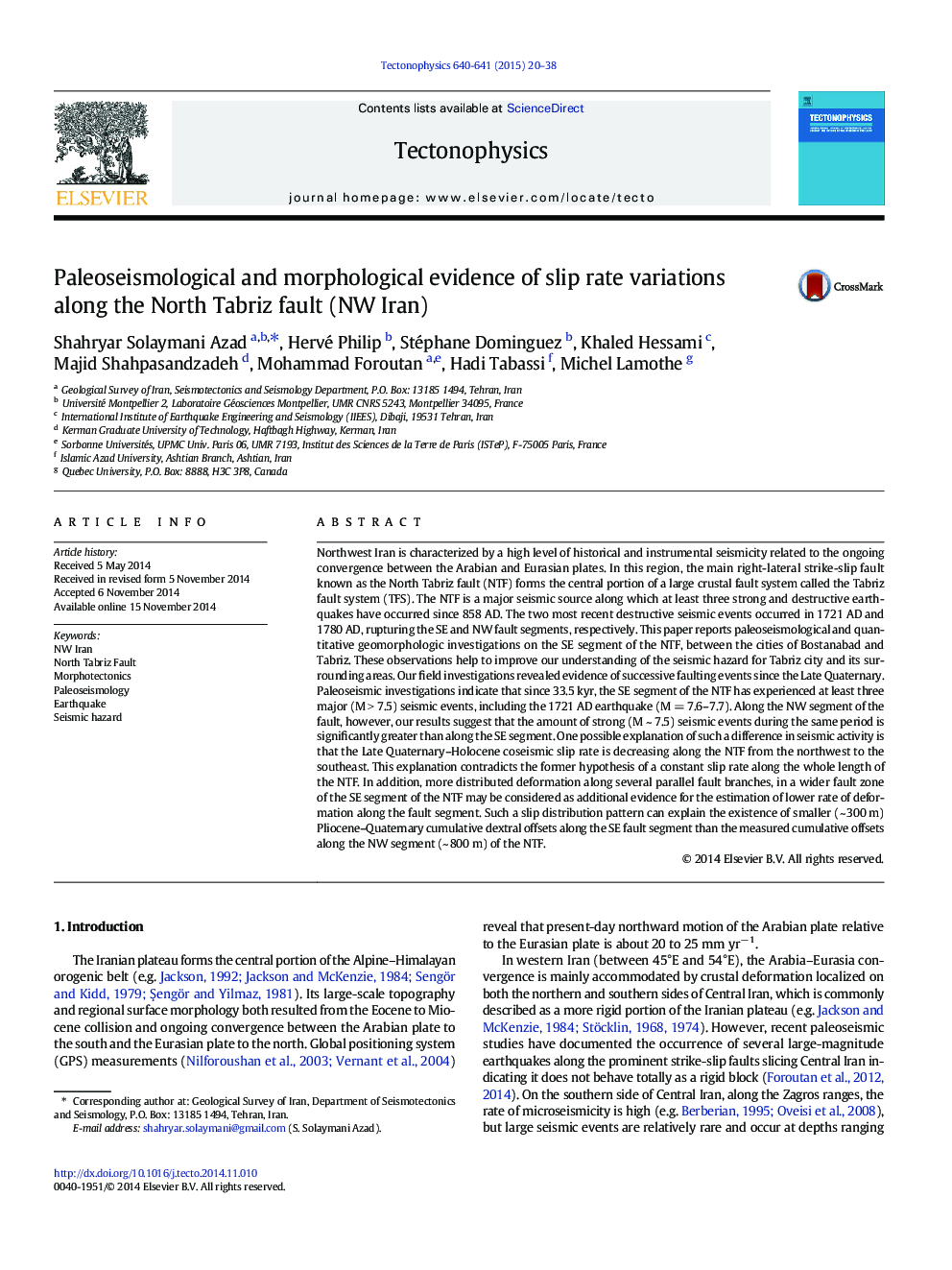| کد مقاله | کد نشریه | سال انتشار | مقاله انگلیسی | نسخه تمام متن |
|---|---|---|---|---|
| 4691704 | 1636751 | 2015 | 19 صفحه PDF | دانلود رایگان |
• The SE segment of the NTF hosted successive earthquakes since the Late Quaternary.
• Recent coseismic slip rate is decreasing along the NTF from the NW to the SE.
• The SE segment of the NTF can be characterized by distributed coseismic deformation.
Northwest Iran is characterized by a high level of historical and instrumental seismicity related to the ongoing convergence between the Arabian and Eurasian plates. In this region, the main right-lateral strike-slip fault known as the North Tabriz fault (NTF) forms the central portion of a large crustal fault system called the Tabriz fault system (TFS). The NTF is a major seismic source along which at least three strong and destructive earthquakes have occurred since 858 AD. The two most recent destructive seismic events occurred in 1721 AD and 1780 AD, rupturing the SE and NW fault segments, respectively. This paper reports paleoseismological and quantitative geomorphologic investigations on the SE segment of the NTF, between the cities of Bostanabad and Tabriz. These observations help to improve our understanding of the seismic hazard for Tabriz city and its surrounding areas. Our field investigations revealed evidence of successive faulting events since the Late Quaternary. Paleoseismic investigations indicate that since 33.5 kyr, the SE segment of the NTF has experienced at least three major (M > 7.5) seismic events, including the 1721 AD earthquake (M = 7.6–7.7). Along the NW segment of the fault, however, our results suggest that the amount of strong (M ~ 7.5) seismic events during the same period is significantly greater than along the SE segment. One possible explanation of such a difference in seismic activity is that the Late Quaternary–Holocene coseismic slip rate is decreasing along the NTF from the northwest to the southeast. This explanation contradicts the former hypothesis of a constant slip rate along the whole length of the NTF. In addition, more distributed deformation along several parallel fault branches, in a wider fault zone of the SE segment of the NTF may be considered as additional evidence for the estimation of lower rate of deformation along the fault segment. Such a slip distribution pattern can explain the existence of smaller (~ 300 m) Pliocene–Quaternary cumulative dextral offsets along the SE fault segment than the measured cumulative offsets along the NW segment (~ 800 m) of the NTF.
Journal: Tectonophysics - Volumes 640–641, 20 January 2015, Pages 20–38
